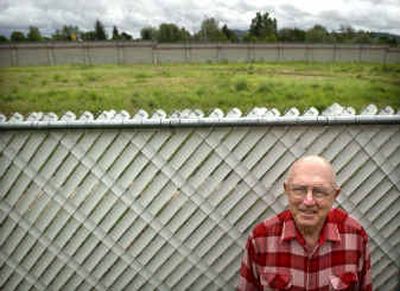Preserving neighborhoods

The man on Deloris Davis’ doorstep wanted her land. He had plans to replace her chicken coop with duplexes, her tall grass with trimmed sod, her 46,560 square feet of elbow room with apartment dwellers spaced less than 50 feet apart.
“They had my land all platted out, a road in here and everything,” Davis said. “I said no to them. They talked to my neighbor. He jumped on the chance and then found out later what he’d done.”
All over Spokane Valley, sprawling back yards are being filled with duplexes, apartment complexes and affordable housing. State growth management laws encourage communities to promote filling in these large lots as a way to keep towns from stretching outward at the city limits.
Since Spokane Valley incorporated in March 2003, planning records show, the city has created nearly 250 new building lots out of properties of roughly one acre or more that were traditionally occupied by a single home. Some of the new lots are for houses. Several are for duplexes or larger apartments.
The practice is not sitting well with neighbors like Davis, who worries the traffic and noise from development east of her University Road home will ruin her quality of life. The construction quality of the new homes is not always as good as that of existing homes, so residents living around infill developments also worry about falling property values.
Neighbors who bring their concerns to the city say speaking up doesn’t do much good.
“I don’t think they really could have done much differently. They have to go by the laws and the development regulations,” said Dick Treadwell, a Nora Drive neighbor who opposed a seven-duplex neighborhood planned for the field behind his home.
There’s only one road leading to the duplex development and it runs in front of Treadwell’s house. He and his neighbors opposed the project because of the traffic and also because the development will likely be occupied by renters. Renters treat neighborhoods with less respect than homeowners do, Treadwell said.
The project next to Treadwell’s cleared the hurdles required by city for lot approval, but there are laws on the books that are not being used that empower local governments to protect a neighborhood’s quality of life.
“In my opinion, we should preserve the integrity of existing neighborhoods,” said Bill Gothmann, chairman of the Spokane Valley Planning Commission. “If the residents don’t want it, I just think that we as a community have a right to say no.”
Most Spokane Valley neighborhoods are zoned so homes can be added without increasing density, Gothmann said. Average density would be about four homes an acre, which can be attained without changing the rules to allow six homes an acre for a particular development.
City governments are allowed to form architectural committees to make sure a development’s style matches the homes around it, Gothmann said. It’s up to the city to pass ordinances to preserve neighborhood quality, if that’s what the community wants.
The Spokane Valley Planning Commission is working on a comprehensive plan for controlling city development. Preserving neighborhoods is part of that discussion and residents are welcome to make recommendations at commission meetings, Gothmann said. Its next meeting is Wednesday at Greenacres Elementary School. Doors open to the public at 6:30 p.m.
But a lot of things can be done now under current development laws said Bonnie Mager, who works to protect neighborhoods through the Northwest Neighborhood Alliance of Spokane County.
Neighbors have the power to create their own plans for building in their area, Mager said. Those neighborhood plans have real power once they’re adopted by the local government. Any planning department should be capable of helping neighbors draft a plan.
“The best thing is if the developer is neighborhood sensitive and doesn’t just have a check-off-the-box meeting with the neighborhood,” Mager said. “The developer can say ‘how can I build in a way that fits your neighborhood character in a way that will benefit it?’ That’s rarely done.”
Sometimes, however, neighbors can’t be swayed. Mark Doerfler, a developer building a 24-home retirement neighborhood just west of Evergreen Road and Eighth Avenue, said his development really isn’t as bad as area residents made it out to be.
His homes are one-story, so they don’t stick way up. There’s a walking trail around the perimeter of the project, which combined with the back yards, will put 50 to 70 feet of space between the new homes and the neighbors. There’s also a fence around the 4.9-acre property.
Doerfler managed to get the neighbors abutting the development’s property line to accept the project, but 40 residents farther away signed a petition opposing it.
“It was the best thing for the neighborhood,” Doerfler said, “better than it could have been.”
In fact, Doerfler said, one of the lots that make up the development was previously targeted by another builder for a multiunit apartment complex. One of the neighbors bought the lot to prevent the apartment from being developed, but approved it for Doerfler’s retirement complex.